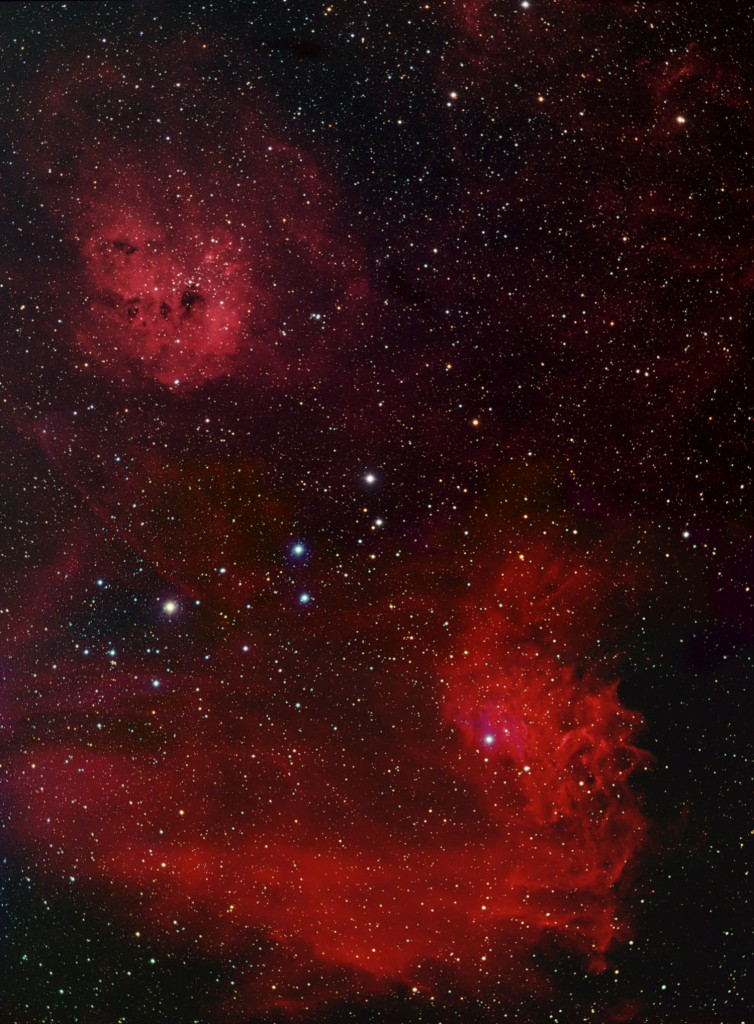The pairing by David Davies of the emission nebulae IC405 and IC410 in the winter constellation of Auriga, the Charioteer makes for a stunning picture. To the bottom of the picture lies IC405, popularly known as the Tadpole Nebula and Caldwell 31, a huge, sprawling nebula spanning five light years and surrounding the ‘Flaming Star’, AE Aurigae, the bright star visible in the upper portion of the nebula. AE Aur (mag. +6) is an runaway star that is thought to have been one of three stars ejected from near the Trapezium in Orion 2.7 million years ago. It’s a class-O hydrogen fusing dwarf that is at least 30,000 times more luminous than our Sun. The nebula and the star lie around 1500 light years away.
The smaller nebula at the top is IC405, commonly known as the Tadpole Nebula for the small ‘tadpole-like’ structures of dense, cooler gas that are being shaped by the intense radiation from the hot stars of the young open cluster NGC 1893, embedded in the nebulosity. It’s just possible to see the tadpoles to the upper right of the largest dark section at the centre of the nebulosity, with the open cluster just above. IC405 lies 12,000 light years away.
David Davies captured this two pane mosaic in H-alphaRGB on 11 and 13 February. A Skywatcher 80ED telescope with a TeleVue TRF-2008 reducer/flattener was used with a QSI 583 camera and Astrodon filters. Each pane comprises 1.5 hours of H-alpha and 2 hours of RGB data. Processing was with Nebulosity, Deep Sky Stacker, Pixinsight and Photoshop. The field of view is two by three degrees with north to the right. The nebulae lie about 2.5 degrees west of the bright open cluster Messier 36.

